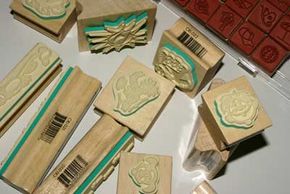The thought of following a series of clues to a hidden treasure has captured imaginations for hundreds of years. You can find it in books like "Treasure Island" and "The Da Vinci Code" or in films like "Indiana Jones and the Last Crusade." More than 150 years ago, an Englishman inadvertently inspired a hobby that today has thousands of people playing along: letterboxing.
While hiking in Dartmoor, James Perrott decided to put some of his personal calling cards in a bottle and hide it on the bank of Cranmere Pool. Anyone finding the bottle could use the cards to contact Perrott and let him know his bottle was found. People began to put their own calling cards in the bottle as proof of their find, and the only way to learn about the bottle was by word of mouth. Few found the bottle, but the number of search attempts increased steadily as time passed.
Advertisement
A few decades later, someone decided to replace the original bottle with a tin box, and the hobby finally got a name. Visitors began to include a self-addressed, stamped postcard in the box that the next person could take home and mail. The receiver could then show the postcard as proof that he found the box. Since mailboxes are called letterboxes in England, everyone started to call the hobby letterboxing.
The game continued to evolve. Eventually, someone put a logbook into the box to let people record their find. In 1907, a man named James H. Strother suggested including a small stamp and inkpad in the box so that visitors could stamp their own personal logbooks as proof of their discovery. Today, almost every letterbox has a unique stamp inside it. In turn, letterboxers carry their own stamps to mark letterbox logbooks.
People began to hide other letterboxes in Dartmoor, using the box on Cranmere Pool as a model, but the hobby grew very slowly. This was probably because letterboxing enthusiasts in England were (and still are) very secretive. In English letterboxing, being tight-lipped is all part of the art. Most of the time, a letterboxer in England would keep his identity secret. You might see the same stamp in logbooks around Dartmoor, but you aren't likely to figure out to whom the stamp belongs.
At first, clues about the various letterbox locations circulated by word of mouth -- later, enterprising letterboxers would collect clues and publish them in guides. Despite a short span of time when officials worried that letterboxers were damaging historic sites and park lands, letterboxing exploded from a rare activity to a regional craze. Today, Dartmoor National Park is home to more than 10,000 letterboxes.
In the next section, we'll look at letterboxing in America.
Advertisement



